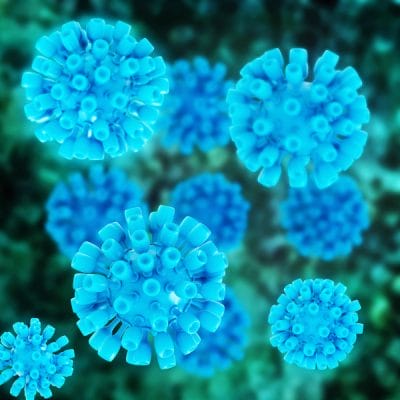Aluminum has been a component of vaccines since the 1930s. It is used as an adjuvant- an ingredient used to strengthen the immune response induced by a vaccine. Unfortunately, vaccines with adjuvants cause more local and systemic side effects. In children receiving multiple vaccines, there is a real risk of aluminum toxicity.
If you choose to vaccinate, being aware of aluminum-containing vaccines and strategies to mitigate risk is wise. Strategies to consider include:
- Follow a low-aluminum schedule
- Support the body’s innate ability to clear aluminum
Why Is Aluminum In Vaccines?
Aluminum is added to certain vaccines as an adjuvant to make them work more effectively. Adjuvants are required for vaccines made from weakened or inactivated bacteria and viruses because these weakened pathogens don’t stimulate a strong immune response.
If these vaccines didn’t contain aluminum, they would have to be administered more times and in larger doses in order to stimulate an effective immune response.
Which Vaccines Contain Aluminum?
“The vaccines that contain aluminum are: Anthrax, DT, DTaP (Daptacel), DTaP (Infanrix), DTaP-IPV (Kinrix), DTaP-IPV (Quadracel), DTaP-HepB-IPV (Pediarix), DTaP –IPV/Hib (Pentacel), Hep A (Havrix), Hep A (Vaqta), Hep B (Engerix-B), Hep B (Recombivax), HepA/Hep B (Twinrix), HIB (PedvaxHIB), HPV (Gardasil 9), Japanese encephalitis (Ixiaro), MenB (Bexsero, Trumenba), Pneumococcal (Prevnar 13), Td (Tenivac), Td (Mass Biologics), Tdap (Adacel), and Tdap (Boostrix).”
“Live virus vaccines don’t require adjuvants because they stimulate a strong enough immune response. The vaccines that don’t have an adjuvant are: ActHIB, chickenpox, live zoster (Zostavax), measles, mumps & rubella (MMR), meningococcal (Menactra, Menveo), rotavirus, seasonal influenza (except Fluad), single antigen polio (IPOL), and yellow fever. “
These lists are from the CDC page: Adjuvants – Vaccine Safety
What Are The Consequences Of Aluminum Toxicity?
Aluminum is a common and naturally occurring element. Regular exposure occurs from food, cosmetics, cookware, vaccinations and more. The body is capable of clearing small amounts of aluminum without any adverse effects.
When the body is exposed to toxic amounts of aluminum, problems with the immune system, genes, inflammatory balance, metabolism, oxidative stress, and more can occur.
Conditions associated with high levels of aluminum include myocarditis, inflammatory bowel diseases, anemia, autism, Alzheimer’s disease, diabetes, and many others.
How Can Risk Be Managed?
Because aluminum is naturally occurring and abundant in the environment, we can be confident that the human body was designed to be able to manage some level of aluminum exposure. The question is how much aluminum can infants and children safely tolerate?
There has been startlingly little actual research done into aluminum metabolism in infants and children considering how much aluminum that we expose them to with vaccinations.
Scientists have used modeling to calculate the cumulative aluminum exposure that children will receive if given the CDC vaccine schedule and have concluded that infants up to 7 months of age will spend 70% of their days in a state of aluminum toxicity and that children up to 2 years of age will spend 25% of their days in a state of aluminum toxicity (Lyons-Weiller et al, 2020).
These scientists propose a low aluminum vaccine schedule and reducing other sources of aluminum. Additionally, supporting the body’s clearance of aluminum may help.
Note: genetic variation can alter an individual’s ability to manage aluminum, but that is beyond the scope of this article.
Low Aluminum Schedule
Scientists modeled different types of vaccine schedules and found that creating a schedule in which only one aluminum containing vaccine was given per visit was able to keep aluminum toxicity to a minimum. Using this low aluminum schedule, children under 2 spent only 7.8% of their days in aluminum toxicity.
My vaccine strategy guide contains sample vaccine schedules (including the custom schedule that I created for my own daughter), and a breakdown of the amount of aluminum in doses of different vaccines, to help to parents make decisions about how to proceed with a vaccination schedule that they feel good about in partnership with their healthcare provider. And, yes you can change your mind about your child’s vaccine schedule, even if you already started!
Supporting The Body’s Innate Ability To Clear Aluminum
As mentioned above, aluminum is a naturally-occurring element and the body has an innate ability to clear it from the system. However, if the body’s detox systems are overwhelmed, they may need some help. In my practice, I support kids before, during, and after vaccination with nutrients and herbs intended to gently enhance detoxification, support inflammatory & immune balance, and provide antioxidant support.
To read more about gentle detox strategies that are appropriate for kids, see 10 Ways To Support Detoxification In Kids, and for more in-depth information, check out my Vaccine Strategy Guide.
Summary
Aluminum is an important ingredient included in some vaccines because it increases their efficacy. Aluminum is naturally occurring and our bodies are equipped with systems to safely and effectively detoxify it. However, high levels of aluminum, as are found in the CDC vaccine schedule, have the potential to cause aluminum to rise to toxic levels. A vaccine schedule that spaces out aluminum containing vaccines, reducing other sources of aluminum, and supporting the body’s ability to clear aluminum are all strategies that might help reduce the risk of harm caused by aluminum.
References:
Lyons-Weiler, J., McFarland, G., & La Joie, E. (2020). Impact of catch-up vaccination on aluminum exposure due to new laws and post social distancing. Journal of trace elements in medicine and biology : organ of the Society for Minerals and Trace Elements (GMS), 62, 126649. https://doi.org/10.1016/j.jtemb.2020.126649
Rahbar, M. H., Samms-Vaughan, M., Pitcher, M. R., Bressler, J., Hessabi, M., Loveland, K. A., Christian, M. A., Grove, M. L., Shakespeare-Pellington, S., Beecher, C., McLaughlin, W., & Boerwinkle, E. (2016). Role of Metabolic Genes in Blood Aluminum Concentrations of Jamaican Children with and without Autism Spectrum Disorder. International journal of environmental research and public health, 13(11), 1095. https://doi.org/10.3390/ijerph13111095
Vaccine Ingredients – Aluminum | Children’s Hospital of Philadelphia
Igbokwe, I. O., Igwenagu, E., & Igbokwe, N. A. (2019). Aluminium toxicosis: a review of toxic actions and effects. Interdisciplinary toxicology, 12(2), 45–70. https://doi.org/10.2478/intox-2019-0007
Chuchu, N., Patel, B., Sebastian, B., & Exley, C. (2013). The aluminium content of infant formulas remains too high. BMC pediatrics, 13, 162. https://doi.org/10.1186/1471-2431-13-162
Dórea, J., Marques, R. Infants’ exposure to aluminum from vaccines and breast milk during the first 6 months. J Expo Sci Environ Epidemiol 20, 598–601 (2010). https://doi.org/10.1038/jes.2009.64


